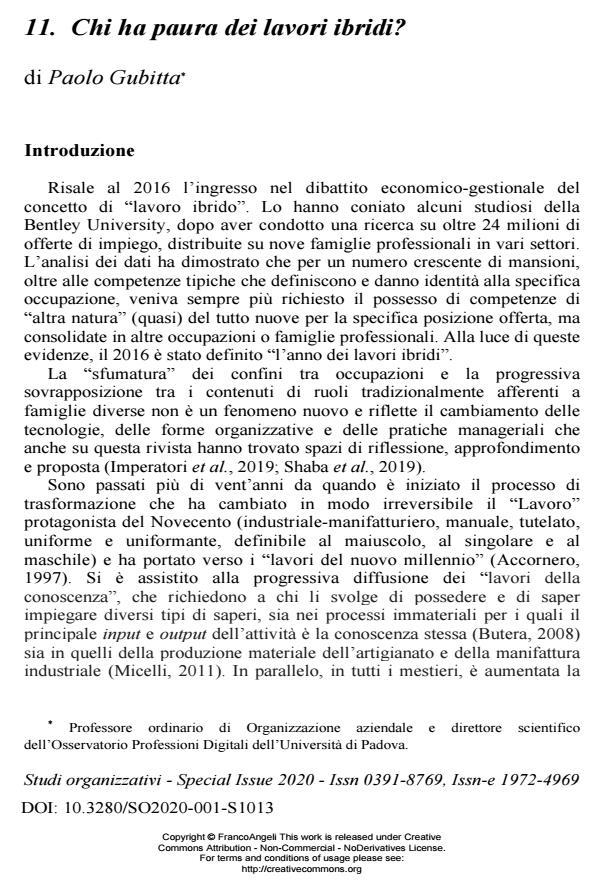Chi ha paura dei lavori ibridi?
Journal title STUDI ORGANIZZATIVI
Author/s Paolo Gubitta
Publishing Year 2020 Issue 2020/suppl. 1
Language Italian Pages 11 P. 220-230 File size 234 KB
DOI 10.3280/SO2020-001-S1013
DOI is like a bar code for intellectual property: to have more infomation
click here

FrancoAngeli is member of Publishers International Linking Association, Inc (PILA), a not-for-profit association which run the CrossRef service enabling links to and from online scholarly content.
Paolo Gubitta, Chi ha paura dei lavori ibridi? in "STUDI ORGANIZZATIVI " suppl. 1/2020, pp 220-230, DOI: 10.3280/SO2020-001-S1013